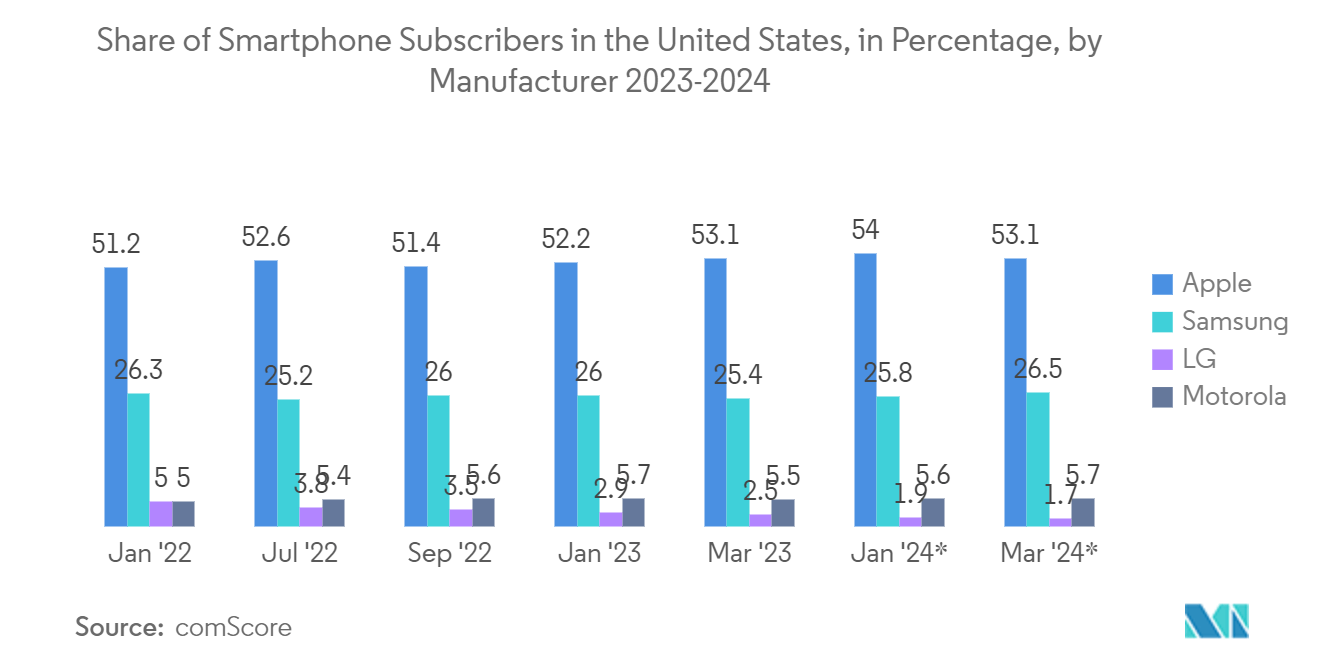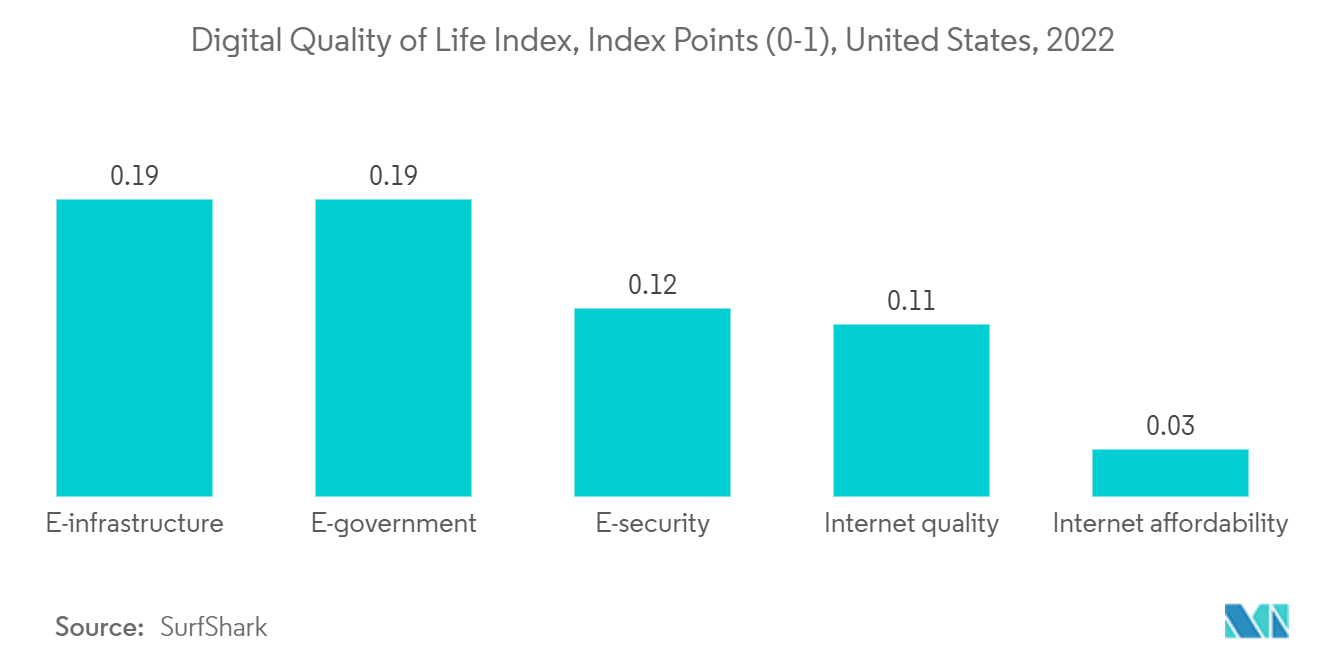Market Trends of Atlanta Data Center Industry
Mega Size Data Center are Expected to Hold Significant Share
- Mega or hyperscale data centers are designed to handle large amounts of data and support various applications. These applications include IT and telecom services, government services, healthcare, e-commerce, media and entertainment, and more. The scalability of mega data centers allows businesses and organizations to quickly and efficiently add capacity to meet their growing needs. These data centers also play an important role in cloud computing, enabling businesses to store and access their data anywhere easily. Overall, mega data centers are a critical component in the digital infrastructure that supports the modern economy, providing the capacity and reliability that businesses and consumers need to stay connected and productive.
- Mega data centers are large-scale industrial activities hosting computer systems using vast electricity. As the size and density of these data centers have increased, industry think tanks have recommended guidelines for their size and density. The Telecommunications Infrastructure Standard for Data Centres, developed by the Telecommunications Industry Association, specifies the minimum requirements for data center and computer room telecommunications infrastructure, including single-tenant enterprise data centers and multi-tenant Internet hosting data centers. Furthermore, the Uptime Institute provides a data center Tier Classification Standard, which defines four tiers ranging from basic capacity to fault-tolerant and covers redundancy, power, and cooling criteria.
- There are several mega-scale data centers located in Atlanta. One such data center is operated by QTS Realty Trust, which has two regional campuses spanning more than 100 acres, including a new 495000 gross square foot mega data center. QTS' data center campuses in Atlanta offer more than 1033 Jefferson Street NW site in Central Atlanta and 495,000 square feet of raised floor space with 72 MW of power capacity at their first phase. Other data centers are operated by different companies, such as Digital Realty and Equinix, both of which have a significant presence in the Atlanta metro area.
- Government agency servers, data center facilities, and networks in the United States must adhere to strict regulations. The two organizations that publish data center standards in the US are the Telecommunications Industry Association (TIA) and the Uptime Institute. The TIA's Telecommunications Infrastructure Standard for Data Centers sets the minimum requirements for telecommunications infrastructure in data centers, including those for enterprise or multi-tenant Internet-hosting data centers.
- The Uptime Institute's Data Center Tier Classification Standard defines four tiers of data centers, with Tier IV being the highest in fault tolerance and Tier I being the most basic capacity with a UPS (uninterruptible power source). Data centers' energy efficiency and water usage are regulated by regulatory and voluntary schemes, such as those set by the US Energy Act of 2020.
- In recent years, there has been a continual rise in the global smartphone user population, with Apple, Samsung, and LG maintaining their positions as the top smartphone manufacturers in the United States as of March 2024. Apple has the largest share of the market at 53.1 percent. data center use for smartphones. Data centers are a critical part of the infrastructure that enables smartphones and other mobile devices. Data centers provide the storage, processing, and networking capabilities that enable the transmission and processing of the vast amounts of data generated by mobile devices. Such a huge rise in the sales of smartphones would drive the market.

Retail Colocation Center is Expected to Hold Significant Share
- Retail colocation is where the customer takes the space for lease within the data center, such as rack space within the caged-off area. Owing to various advantages, such as economics and ease of maintenance, smaller enterprises generally prefer retail colocation. Owning a data center is not a viable option due to the cost of land leasing. Also, maintenance of a colocation center is often outside budget constraints.
- The retail colocation market is likely driven by the high demand for colocation services from developing countries. Compared to wholesale colocation services, retail colocation services are highly suitable for enterprises requiring lesser computing power at one site or across multiple locations to benefit local and global customers. The retail colocation market is anticipated to grow significantly during the forecast period. About 100 kW of energy is typically needed to power retail data centers, while wholesale customers usually need more than 100 kW, owing to their business scale. Many facilities, such as security provision, customer support, cooling facilities, etc., are provided by colocation suppliers.
- Typically, retail customers have many partners to maintain connectivity. Therefore, a diverse set of carriers with good speeds are necessary. Additionally, as retail data center providers work with more clients than wholesale providers, their facilities usually offer a multitude of networks and services. Retail providers offer various services, such as smart hands and remote hands, for technical assistance, managed services, and network monitoring. Therefore, resolving issues can be as simple as raising a service ticket. Such services help exploit various other benefits, such as locating data centers away from disaster-prone areas that can be remotely operated. Due to this remote hand's technology, tax benefits in different states can be used to avail certain tax benefits.
- Many new technologies, including 100% green data centers, have been deployed in retail colocation. Aruba SPA has built a 100% green data center facility. This facility uses underground flowing rivers to turn turbines, solar panels, and underground water pumped to the surface for cooling purposes. The need for interconnectivity is also increasing, increasing the demand for retail colocation. It has been identified that the leading providers of colocation services offer as many as 230,000 interconnection possibilities. Many SME industries constitute a large part of the economy. Such SMEs can only afford part of the space for utility, as the IT staff and operations are included in this scale of operation.
- According to SurfShark, in 2022, the United States E-infrastructure index amounted to 0.1944. By contrast, the Internet affordability index was only 0.0326. Since retail colocation facilities have become old and outdated, their customers are choosing to leave these facilities to find other, newer, multi-tenant data center providers. When retail colocation facilities lose customers, this presents itself in their customer churn metrics. Indeed, public data center companies report churn metrics quarterly, with higher churn implying that more customers are leaving.


